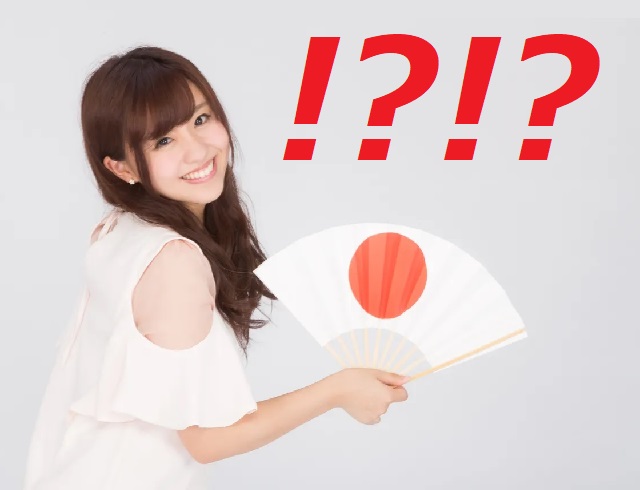
Change is part of first update to Guidelines for Official Writing Composition in 70 years.
The Japanese government has something called the kouyoubun sakusei no youryou, or the “Guidelines for Official Writing Composition.” It’s basically a set of writing protocols for government documents and public notices, and it hasn’t been updated in a long time. The last overhaul happened all the way back in 1952, when documents were first officially allowed to be written horizontally instead of the more classical vertical orientation of Japanese text.
But after 70 years, the Ministry of Education, Culture, Sports, Science and Technology has decided to make some changes, and one of the biggest is officially giving Japanese government workers permission to use question marks and exclamation points.
Up until now the Guidelines made no mention of question marks or exclamation points, with the implication being that, in principle, neither was to be used. That might seem like a major obstacle for written communication, but neither punctuation mark is indigenous to the Japanese language, and so there are other ways to express the concepts. For example, when forming questions in Japanese, the syllable ka is tacked on to the end of a sentence, and so writing ka, か in the Japanese language’s phonetic hiragana script, conveys that a question is being asked.
▼ Top: Anata wa ramen wo tabemashita./You ate ramen.
Bottom: Anata wa ramen wo tabemashita ka./Did you eat ramen?
In orthodox Japanese writing, both sentences end with a period.
However, the updated guidelines, which were drafted by the Ministry’s Council for Cultural Affairs, recognize that there are times when the inclusion of a question mark or exclamation point can make the meaning or emotion of a sentence clearer, such as rendering a conversation in written form, and so they’re now cleared for use in documents, public notices, and public awareness/PR campaigns.
The Ministry announced the new Guidelines last Friday, and while it admits that question marks and exclamation points had already begun creeping into government compositions, they’re now got the official OK.
Source: Agency for Cultural Affairs via Yomiuri Shimbun Online via Livedoor News via Jin
Top image: Pakutaso (edited by SoraNews24)
Insert image: SoraNews24
● Want to hear about SoraNews24’s latest articles as soon as they’re published? Follow us on Facebook and Twitter!


 Japanese government to make first change to romanization spelling rules since the 1950s
Japanese government to make first change to romanization spelling rules since the 1950s Permanent residency in Japan now possible after just one year
Permanent residency in Japan now possible after just one year Kyoto study finds nearly 500 translation errors for foreign tourists, new guidelines released
Kyoto study finds nearly 500 translation errors for foreign tourists, new guidelines released Bacon seems to have fried the brain of one of Japan’s top politicians, judging from crazy tweet
Bacon seems to have fried the brain of one of Japan’s top politicians, judging from crazy tweet Japanese city loses residents’ personal data, which was on paper being transported on a windy day
Japanese city loses residents’ personal data, which was on paper being transported on a windy day How to order snacks on a Shinkansen bullet train in Japan
How to order snacks on a Shinkansen bullet train in Japan Japan’s new difficult-to-drink-from beer glass protects your liver, but it’s a brutal experience
Japan’s new difficult-to-drink-from beer glass protects your liver, but it’s a brutal experience Demon Slayer: Kimetsu no Yaiba gets new roller coaster attractions and food at Universal Studios Japan
Demon Slayer: Kimetsu no Yaiba gets new roller coaster attractions and food at Universal Studios Japan Burger King Japan suddenly adds Dr. Pepper and Dr. Pepper floats to its menu nationwide
Burger King Japan suddenly adds Dr. Pepper and Dr. Pepper floats to its menu nationwide New Pokémon ice cream, dessert drinks, and cool merch coming to Baskin-Robbins Japan【Pics】
New Pokémon ice cream, dessert drinks, and cool merch coming to Baskin-Robbins Japan【Pics】 New Nintendo Lego kit is a beautiful piece of moving pixel art of Mario and Yoshi【Photos】
New Nintendo Lego kit is a beautiful piece of moving pixel art of Mario and Yoshi【Photos】 New samurai glasses are Japan’s latest weird must-have souvenir
New samurai glasses are Japan’s latest weird must-have souvenir Kyoto Tower mascot termination reveals dark side behind cute Japanese characters
Kyoto Tower mascot termination reveals dark side behind cute Japanese characters Hello, cosmetics! Clinique teams up with Hello Kitty this summer for first-time collaboration
Hello, cosmetics! Clinique teams up with Hello Kitty this summer for first-time collaboration This Nara workshop has been making deer crackers for more than 100 years and offers tours【Photos】
This Nara workshop has been making deer crackers for more than 100 years and offers tours【Photos】 Nintendo history you can feel – Super NES, N64, and GameCube controllers become capsule toys
Nintendo history you can feel – Super NES, N64, and GameCube controllers become capsule toys “The most Delicious Cup Noodle in history” – Japan’s French Cup Noodle wins our heart【Taste test】
“The most Delicious Cup Noodle in history” – Japan’s French Cup Noodle wins our heart【Taste test】 Starbucks releases a cute Frappuccino and Unicorn Cake…but not in Japan
Starbucks releases a cute Frappuccino and Unicorn Cake…but not in Japan McDonald’s Japan’s Soft Twist Tower: A phantom ice cream only sold at select branches
McDonald’s Japan’s Soft Twist Tower: A phantom ice cream only sold at select branches Yabai Ramen: What makes this Japanese ramen so dangerous?
Yabai Ramen: What makes this Japanese ramen so dangerous? Finally! Nintendo Japan expands Switch 8-bit controller sales to everybody, Online member or not
Finally! Nintendo Japan expands Switch 8-bit controller sales to everybody, Online member or not Japanese government wants to build luxury resorts in all national parks for foreign tourists
Japanese government wants to build luxury resorts in all national parks for foreign tourists To combat declining birth rate, Japan to begin offering “Breeding Visas” to foreigners
To combat declining birth rate, Japan to begin offering “Breeding Visas” to foreigners 10 things you should buy at 7-Eleven in Japan
10 things you should buy at 7-Eleven in Japan Studio Ghibli releases anime heroine cosplay dresses that are super comfy to wear
Studio Ghibli releases anime heroine cosplay dresses that are super comfy to wear Woman charged for driving suitcase without a license in Osaka
Woman charged for driving suitcase without a license in Osaka Studio Ghibli unveils My Neighbour Totoro miniature house model
Studio Ghibli unveils My Neighbour Totoro miniature house model Kyoto experiencing problems with foreign tourists not paying for bus fares, but not on purpose
Kyoto experiencing problems with foreign tourists not paying for bus fares, but not on purpose Fighting mild hunger with a Japanese soda that turns into jelly in the stomach【Taste test】
Fighting mild hunger with a Japanese soda that turns into jelly in the stomach【Taste test】 Studio Ghibli’s Howl’s Moving Castle tapestry unveiled in Japan for first time
Studio Ghibli’s Howl’s Moving Castle tapestry unveiled in Japan for first time McDonald’s new Happy Meals offer up cute and practical Sanrio lifestyle goods
McDonald’s new Happy Meals offer up cute and practical Sanrio lifestyle goods Sales of Japan’s most convenient train ticket/shopping payment cards suspended indefinitely
Sales of Japan’s most convenient train ticket/shopping payment cards suspended indefinitely Sold-out Studio Ghibli desktop humidifiers are back so Totoro can help you through the dry season
Sold-out Studio Ghibli desktop humidifiers are back so Totoro can help you through the dry season Japanese government to make first change to romanization spelling rules since the 1950s
Japanese government to make first change to romanization spelling rules since the 1950s Foreigner’s request for help in Tokyo makes us sad for the state of society
Foreigner’s request for help in Tokyo makes us sad for the state of society Ghibli founders Toshio Suzuki and Hayao Miyazaki contribute to Japanese whisky Totoro label design
Ghibli founders Toshio Suzuki and Hayao Miyazaki contribute to Japanese whisky Totoro label design Doraemon found buried at sea as scene from 1993 anime becomes real life【Photos】
Doraemon found buried at sea as scene from 1993 anime becomes real life【Photos】 Tokyo’s most famous Starbucks is closed
Tokyo’s most famous Starbucks is closed Princesses, fruits, and blacksmiths: Study reveals the 30 most unusual family names in Japan
Princesses, fruits, and blacksmiths: Study reveals the 30 most unusual family names in Japan Mask rules in Japan have changed…so are people still wearing them?
Mask rules in Japan have changed…so are people still wearing them? “Do not travel to Japan” U.S. government tells citizens
“Do not travel to Japan” U.S. government tells citizens Learn Japanese through ridiculous manga: Narutoe 【Episode #2】
Learn Japanese through ridiculous manga: Narutoe 【Episode #2】 Japanese government tells teachers not to be so strict, at least about some kanji radicals
Japanese government tells teachers not to be so strict, at least about some kanji radicals Government form allows Japanese romantics to officially declare their love
Government form allows Japanese romantics to officially declare their love Seven mistakes foreigners make when speaking Japanese—and how to fix them
Seven mistakes foreigners make when speaking Japanese—and how to fix them Kirin to release line of 1% drinks, we’re not entirely sure why either
Kirin to release line of 1% drinks, we’re not entirely sure why either Divine prevention – Japan using Shinto symbols to combat litter and public peeing
Divine prevention – Japan using Shinto symbols to combat litter and public peeing Kyoto Animation arson attack leads Japanese government to develop stricter gas sale regulations
Kyoto Animation arson attack leads Japanese government to develop stricter gas sale regulations Textbook gives Chinese otaku Japanese lessons with a side of anime girls and dialogue
Textbook gives Chinese otaku Japanese lessons with a side of anime girls and dialogue Sending naughty kids to bed without dinner may soon be illegal in Japan
Sending naughty kids to bed without dinner may soon be illegal in Japan Sheltering-in-place Japanese schoolkids form “Neo-Chorus” choir to refresh our hearts【Video】
Sheltering-in-place Japanese schoolkids form “Neo-Chorus” choir to refresh our hearts【Video】 Japanese student protesters announce “WE WILL STOP!!!!” in English on Twitter, get clowned for it
Japanese student protesters announce “WE WILL STOP!!!!” in English on Twitter, get clowned for it Pokémon Center apologizes for writing model Nicole Fujita’s name as Nicole Fujita
Pokémon Center apologizes for writing model Nicole Fujita’s name as Nicole Fujita Comiket will require proof of coronavirus vaccination or PCR test results for admission
Comiket will require proof of coronavirus vaccination or PCR test results for admission
Leave a Reply